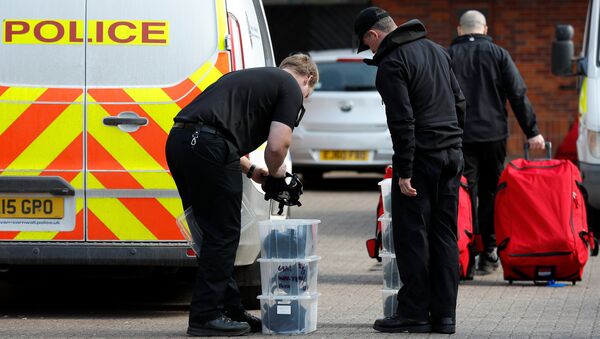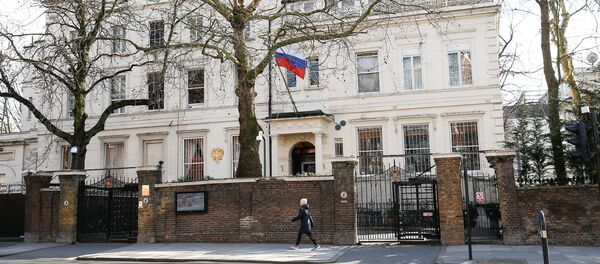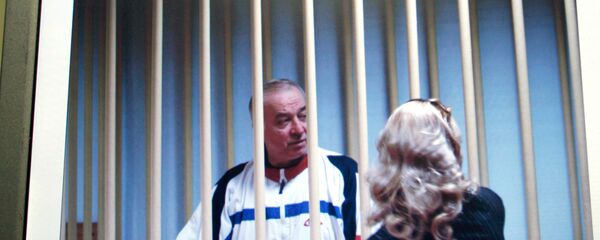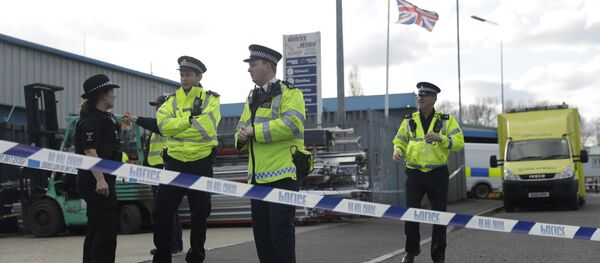OPCW, providing technical assistance to the United Kingdom on the Skripals’ incident, concluded its analysis of the biomedical samples last week. The watchdog confirmed the UK findings relating to the identity of the chemical used to poison Sergei and Yulia Skripals. The name of the substance, however, was only mentioned in the full report which was distributed to the OPCW member states, including Russia, and never revealed publicly.
On Saturday, Russian Foreign Minister Sergei Lavrov announced that one of the OPCW designated laboratories, the Swiss center for nuclear, biological and chemical protection in the city of Spiez, detected traces of BZ toxin in the samples that they received. He added that the condition of Skripals looked like they were poisoned with BZ rather than A234 nerve agent and that the BZ formula was used by NATO members, but never studied in Russia or the Soviet Union.
Moscow is asking OPCW why the information from the Spiez laboratory was omitted in the report, the minister added.
Possibly a Positive Control Marker
"When OPCW sends samples to laboratories, other substances are sometimes included in the samples as what is known as positive controls. It is to test the competence of the laboratories. They have to be able to identify this positive control in the sample. If they are not able to do this then all their results are thrown into doubt," Alastair Hay, professor of environmental toxicology at the University of Leeds, UK, told Sputnik.
Asked by Sputnik whether this could be the case and BZ could have been used to test the accuracy of a random laboratory, OPCW did not give a direct reply, noting only that the organization "does not disclose the identity of designated labs that contribute to OPCW activities" and that "these labs are also bound by secrecy agreements."
Indeed, the Spiez laboratory respected its secrecy obligations and never commented on Lavrov’s statements, readdressing all the journalists’ requests to the OPCW and their full classified report.
"A precursor of BZ, Quinuclidin-3-ol… was used as the positive control. It was deliberately added to one or more samples. None of the laboratories knew this. They simply report what they find in the samples. … So, BZ was present simply as a control," Hay continued.
READ MORE: BZ vs. A-234: How Russia Exposed the Lie of UK Gov't, Ripped British Version Up
"Concerning the full OPCW report, there is a confidentiality agreement under which the OPCW can publish only those facts and findings which are approved by the United Kingdom as it was a technical report at London’s request. It appears that London has made a mistake of authorizing the report’s distribution among all OPCW members. It is clear that Russia will now look closely into the report’s findings and study it under a magnifying glass," Anton Utkin, a former UN chemical weapons inspector in Iraq, told Sputnik.
Impossibly a Lethal Agent
No matter how intriguing the presence of BZ in the samples may seem, experts believe it could not have been used as a lethal agent due to its chemical characteristics.
"Usually, when the term ‘nerve agent’ is used, it refers to an organophosphorus (OP) compound that potently inhibits the enzyme acetylcholinesterase (AChE). BZ is not an OP nerve agent, and it does not inhibit AChE. Instead, it is a potent acetylcholine antagonist at muscarinic acetylcholine receptors. Thus, it is similar to atropine, but it is much more potent and longer lasting," Rudy Richardson, professor of toxicology at the University of Michigan, told Sputnik.
The expert added that BZ is used as an incapacitating agent and the symptoms of BZ and a nerve agent poisoning are different, though there can be some overlapping signs and symptoms.
"BZ can produce the desired effect of incapacitation at low doses, but its lethal dose is very high," he said.
The Health condition of both Skripals started to improve rather rapidly after hospital admission, although the substance with which they were allegedly poisoned, the A-234 nerve agent, is expected to cause a very serious damage if not death.
READ MORE: US Presented Missile Strike on Syria as Act of Retaliation — Russian Envoy
If poisoned by BZ toxin, "a person develops the so-called negativism, when he does the opposite of what he is told to do. The BZ toxin’s impact also resembles symptoms after atropine’s exposure – it affects the nervous system," Anton Utkin told Sputnik.
Symptoms in some cases resemble those common under the influence of cocaine, such as dizziness and hallucinations.
"Because its effects can be unpredictable, some people can become very happy after exposure, others very aggressive, it was never developed as a chemical weapon," Alastair Hay said.
READ MORE: Strikes on Syria Reminiscent of US Hegemonic Goals in West Asia — Indian Analyst
Russia has denied having any role in the poisoning, pointing to the lack of evidence provided by London to substantiate its accusations. Russia also offered its assistance in the investigation. However, Moscow's request for samples of the chemical substance used to poison the Skripals was rejected.
The views and opinions expressed by the speaker do not necessarily reflect those of Sputnik.




